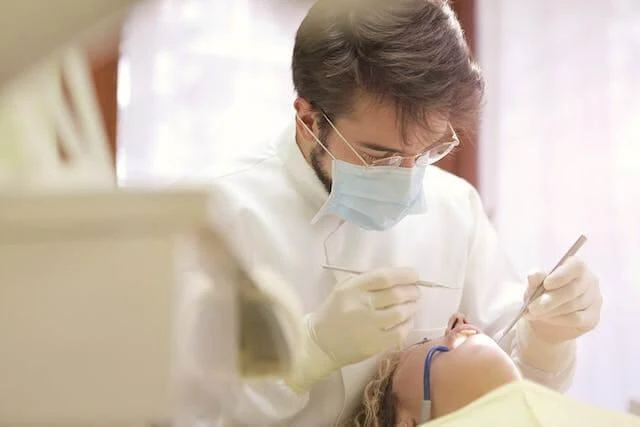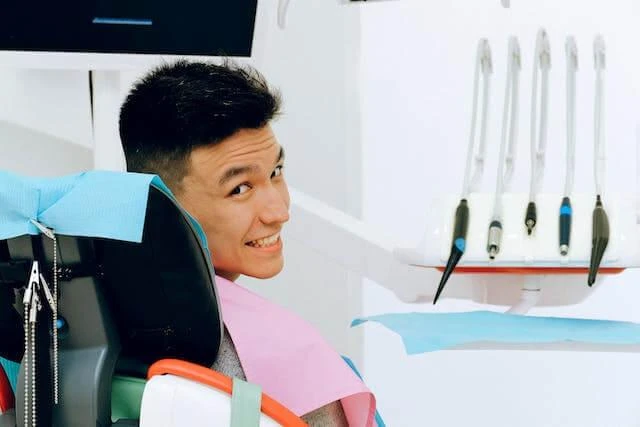Bruxism, a prevalent dental ailment, impacts millions of individuals globally. This condition is marked by the involuntary grinding or clenching of teeth, resulting in a host of dental complications and discomfort.
This in-depth resource will delve into the origins, indicators, diagnostic methods, and successful remedies for bruxism. Our aim is to empower you with the knowledge to enhance your dental well-being and overall quality of life.
Understanding Bruxism
Bruxism refers to the habit of grinding, gnashing, or clenching one’s teeth. While it can occur during the day, it frequently happens at night during sleep, known as sleep bruxism. Both forms of bruxism can result in significant dental and health issues.
Causes and Risk Factors
Bruxism can have various causes and risk factors, making it essential to understand the underlying triggers:
- Stress and anxiety
- Misaligned teeth or jaw
- Sleep disorders, such as sleep apnea
- Medications that affect the nervous system
- Excessive alcohol, caffeine, or drug use
Signs and Symptoms
Identifying bruxism early is crucial for effective treatment. Common signs and symptoms include:
- Worn-down or chipped teeth
- Tooth sensitivity
- Jaw pain or soreness
- Frequent headaches
- Earaches
- Disrupted sleep patterns
Diagnosis
Diagnosing bruxism is a crucial step on the path to effective treatment. Identifying the condition accurately ensures that the chosen interventions are tailored to the individual’s specific needs. Here, we will delve into the diagnostic process, emphasizing the importance of seeking professional evaluation.
The Need for Professional Evaluation
If you suspect you have bruxism, seeking professional evaluation is essential. A dentist or dental specialist can properly diagnose the condition and recommend appropriate treatment options.
Dental Examination and History-Taking
During a dental examination, your dentist will look for signs of bruxism, such as tooth wear and damage. A thorough history-taking session will help identify potential triggers and patterns of teeth grinding.
Potential Use of Imaging and Tests
In some cases, your dentist may recommend imaging or tests to assess the extent of dental damage or any underlying issues. These may include X-rays, dental impressions, or polysomnography to evaluate sleep patterns.
Treatment Options
Once bruxism has been accurately diagnosed, the next crucial step is to explore the various treatment options available. Depending on the severity of the condition and individual factors, there are several approaches to consider when addressing grinded teeth.
Lifestyle and Self-Help Strategies
- Stress Management Techniques: Learning to manage stress effectively can significantly reduce bruxism. Techniques such as yoga, meditation, and deep breathing exercises can help relax the body and mind.
- Dental Hygiene Practices: Good dental hygiene, including regular brushing and flossing, can help prevent further damage to teeth. Avoiding abrasive toothpaste and maintaining a soft-bristle toothbrush are essential.
Dental Appliances and Mouthguards
- Explanation of Various Types: Dental professionals may recommend different types of dental appliances, including mouthguards, splints, or bite guards, depending on the severity of bruxism.
- How They Work: These appliances work by providing a protective barrier between the upper and lower teeth, preventing them from grinding against each other.
Medications
- Types of Medications Used: Medications may sometimes be prescribed to alleviate bruxism symptoms. These may include muscle relaxants, anti-anxiety medications, or botulinum toxin injections.
- Pros and Cons: Discussing the benefits and potential side effects of medications with a healthcare provider is essential before starting any treatment.
Dental Procedures
- Restorative Treatments: For patients with significant tooth damage, restorative treatments like fillings, crowns, or veneers can help restore the appearance and functionality of teeth.
- Orthodontic Solutions: In cases where misaligned teeth contribute to bruxism, orthodontic treatments may be recommended to correct the alignment and reduce grinding.
- Surgical Options: In rare and severe cases, surgical procedures may be considered, such as adjusting the jaw joint or muscle surgery to alleviate bruxism symptoms.
Preventive Measures

Taking proactive steps to prevent the onset or exacerbation of bruxism is of paramount importance. By adopting preventive measures, individuals can reduce the risk of developing this condition or mitigate its effects, ultimately safeguarding their dental health and overall well-being.
- Emphasizing the Importance of Prevention: Preventing bruxism is as important as treating it. Consider these tips to reduce the risk of developing or exacerbating bruxism:
- Stress Reduction Techniques: Practicing stress management techniques can significantly reduce the frequency and intensity of teeth grinding.
- Avoiding Triggers: Identifying and avoiding triggers, such as excessive caffeine or alcohol consumption, can help prevent bruxism episodes.
- Proper Dental Care: Maintaining good dental hygiene and attending regular check-ups can catch bruxism early and prevent further dental damage.
- Regular Dental Check-Ups: Scheduling routine dental check-ups is vital for monitoring your oral health and promptly addressing any signs of bruxism.
Lifestyle Changes for Managing Bruxism
In addition to the various treatment options available, making certain lifestyle changes can significantly contribute to the long-term management of bruxism. These changes aim to reduce stress, promote good oral health, and improve overall well-being. Let’s explore some practical lifestyle adjustments that can complement your bruxism treatment plan:
- Making Lifestyle Changes for Long-Term Success: In addition to treatment options, making certain lifestyle changes can contribute to long-term success in managing bruxism.
- Diet and Nutrition Tips: A balanced diet rich in essential nutrients, such as calcium and magnesium, can support overall dental health.
- Sleep Hygiene Recommendations: Establishing a healthy sleep routine and addressing any underlying sleep disorders can improve sleep quality and reduce nighttime bruxism.
Professional Help
When dealing with bruxism, seeking professional assistance is a pivotal step in managing and mitigating the condition effectively. Dental professionals play a crucial role in diagnosing and tailoring treatment plans to meet your specific needs. Let’s delve deeper into the significance of consulting with a dentist or specialist:
- Encourage Readers to Consult a Dentist or Specialist: It’s crucial to emphasize that seeking professional help is essential for proper diagnosis and treatment of bruxism.
- Discuss the Role of a Dental Professional in Treatment: Dental professionals play a crucial role in identifying, diagnosing, and providing effective treatment options for bruxism. They can customize treatment plans to suit individual needs and monitor progress.
Professional Care at Supremia Dentistry
When it comes to addressing bruxism, Supremia Dentistry offers expert care tailored to your unique needs. Our skilled team of dental professionals diagnoses and treats bruxism comprehensively, providing personalized treatment plans and cutting-edge solutions to ensure your dental health.
With ongoing support, we’re committed to helping you achieve a healthier smile. Contact us today to schedule your consultation and start your journey to a better quality of life.
Conclusion

Grinded teeth, or bruxism, is a common dental issue that can have significant consequences if left untreated. It is essential to effective management to understand its causes, recognise the signs and symptoms, and seek professional help.
With various treatment options, preventive measures, and lifestyle changes, individuals can take control of their oral health and enjoy a better quality of life free from the discomfort of bruxism. Remember, early intervention and consistent care are key to fixing grinded teeth and preventing further damage.

